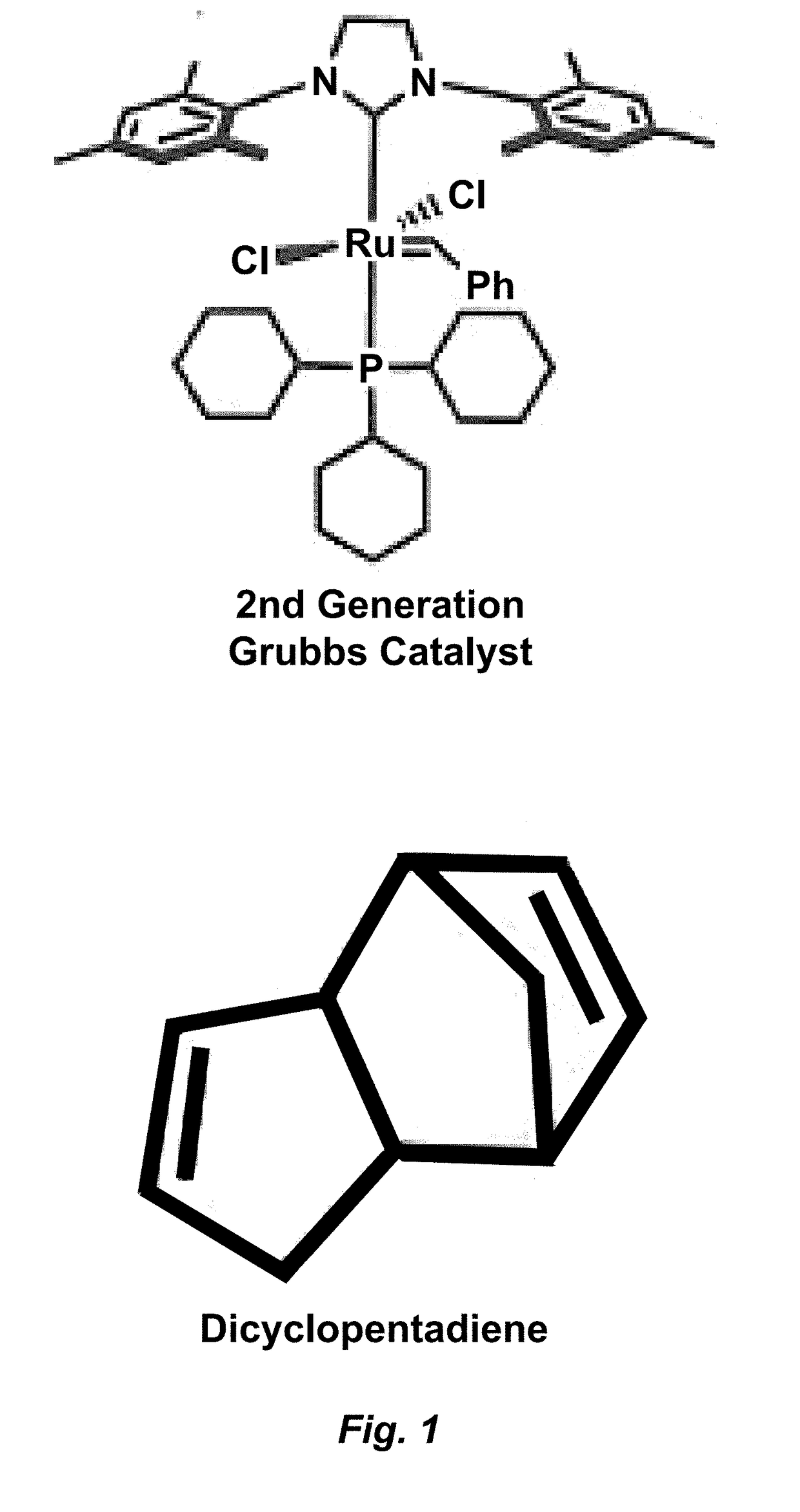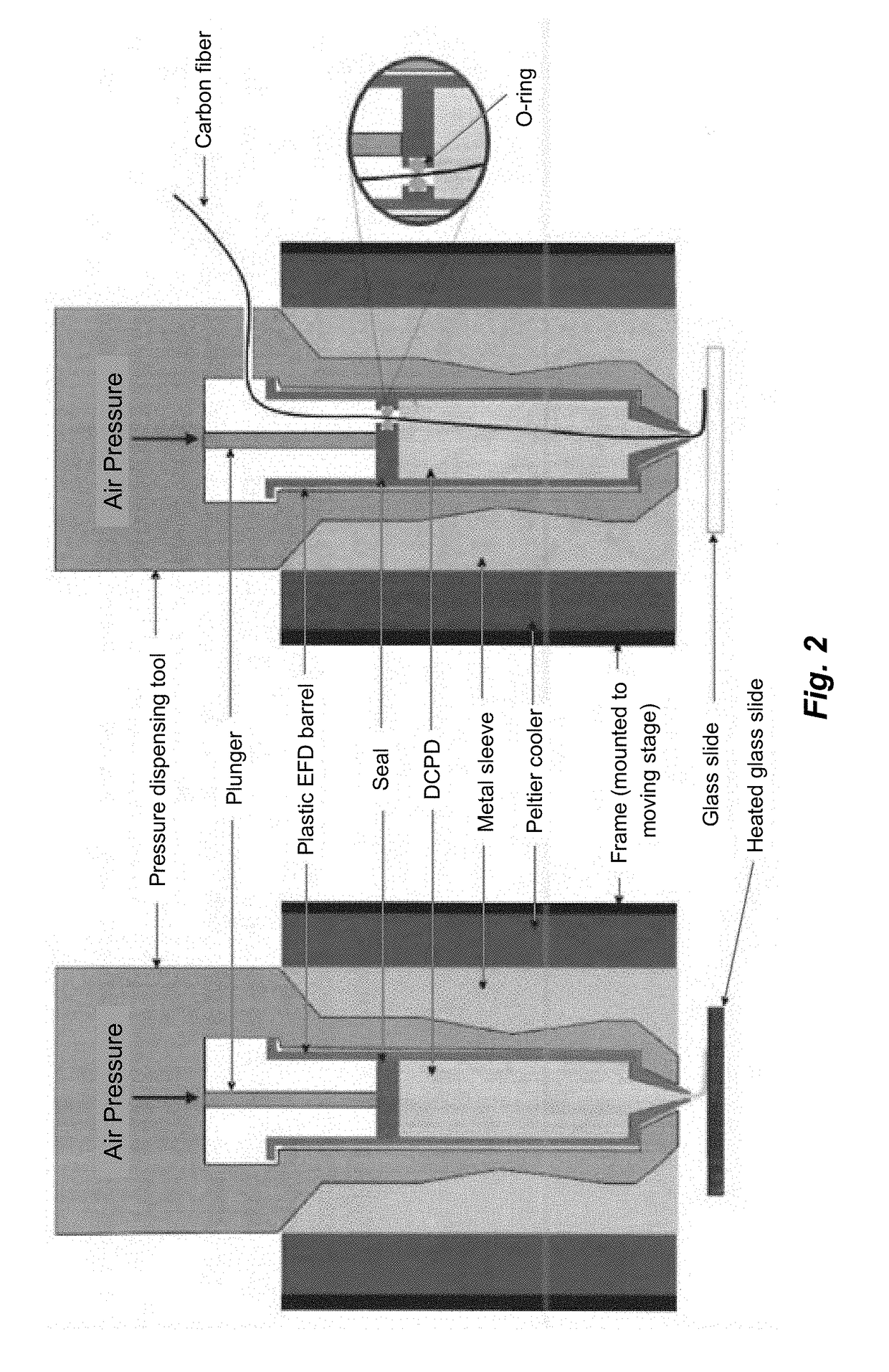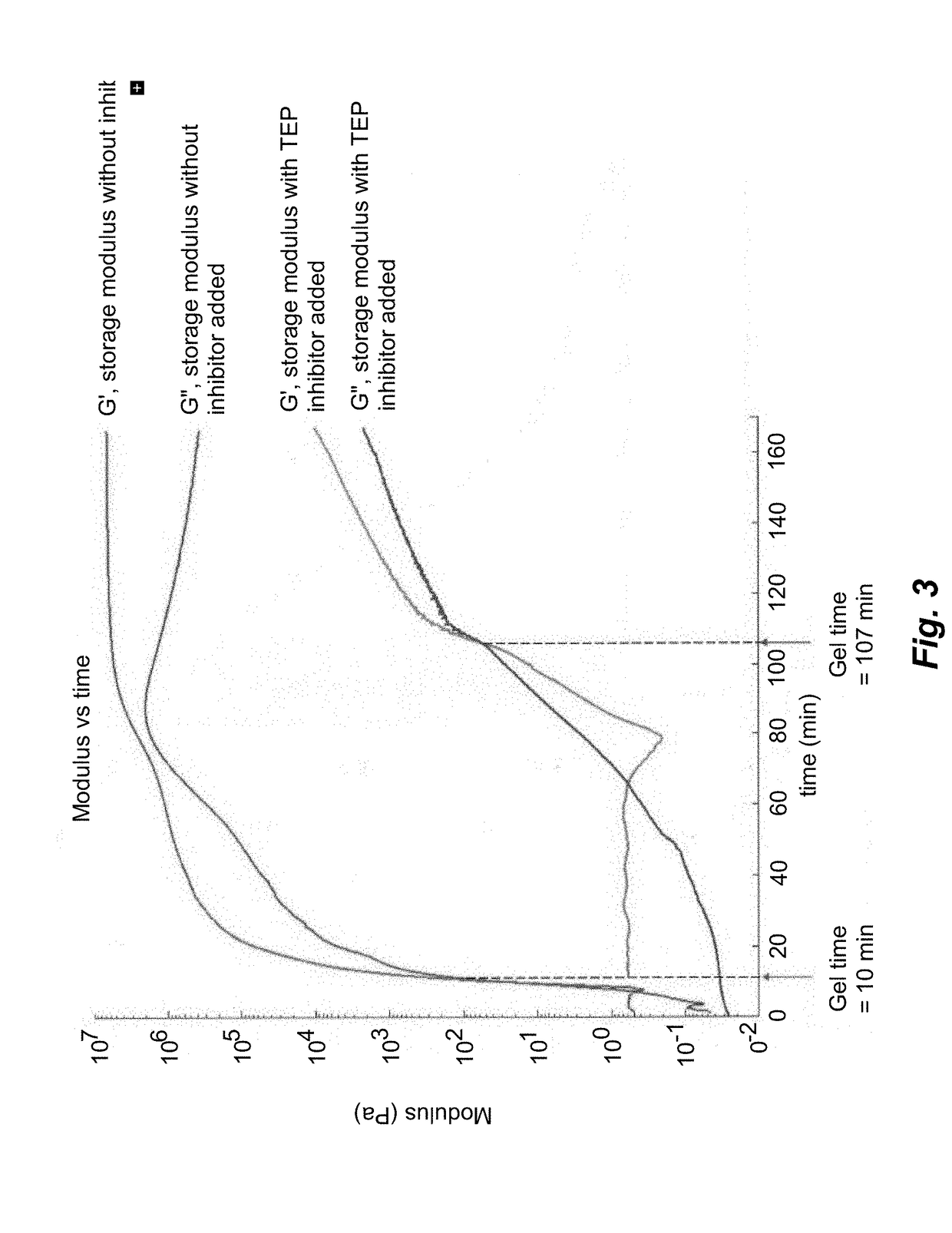3D printing of thermoset polymers and composites
- Summary
- Abstract
- Description
- Claims
- Application Information
AI Technical Summary
Benefits of technology
Problems solved by technology
Method used
Image
Examples
Example
Example
Materials and Methods
Formulation and Technique for 3D-Printing Via Frontal Polymerization
[0093]The 3D printable FROMP gel consists of three main components: the monomer, catalyst and inhibitor. A combination of different chemicals can be used for this technique. As such, this approach could be broadly applicable to several thermally triggered polymerizations.
[0094]Dicyclopentadiene (DCPD) and Grubbs catalyst, 2nd generation (GC2) are used as the monomer and catalyst respectively. A number of compounds were found useful for inhibiting the reactive chemistry between DCPD and GC2. This includes trimethyl phosphite (TMP), triethyl phosphite (TEP), triisopropyl phosphite (TIPP), tributyl phosphite (TBP), triphenyl phosphite (TPP) and 4-dimethylaminopyridine (DMAP).
[0095]To prepare the gel, DCPD is melted in an oven at 35° C. and combined with 5 wt. % 5-ethylidene norbomene to lower the melting point below room temperature. GC2 (1.00 mg) is dissolved in 111 μl of anhydrous toluene....
PUM
| Property | Measurement | Unit |
|---|---|---|
| Temperature | aaaaa | aaaaa |
| Storage modulus | aaaaa | aaaaa |
| Storage modulus | aaaaa | aaaaa |
Abstract
Description
Claims
Application Information
 Login to View More
Login to View More - Generate Ideas
- Intellectual Property
- Life Sciences
- Materials
- Tech Scout
- Unparalleled Data Quality
- Higher Quality Content
- 60% Fewer Hallucinations
Browse by: Latest US Patents, China's latest patents, Technical Efficacy Thesaurus, Application Domain, Technology Topic, Popular Technical Reports.
© 2025 PatSnap. All rights reserved.Legal|Privacy policy|Modern Slavery Act Transparency Statement|Sitemap|About US| Contact US: help@patsnap.com



